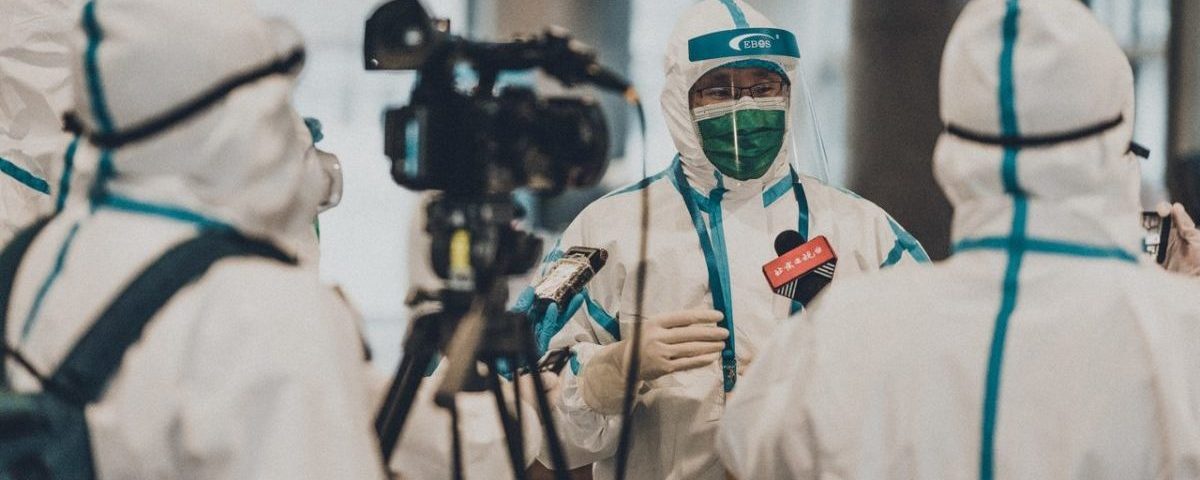
Covid-19 is critically affecting every country and economic sector, with no exceptions. Still, several essential services are fighting the pandemic on the front lines. Of particular note is the praiseworthy work of healthcare workers, security officers, street cleaning services, and the media. This last sector is considered an essential service. Its role in guaranteeing society accurate, objective, rigorous, verified information is fundamental to democracies, as well as countering the avalanche of fake news. The World Health Organization’s director, Tedros Adhanom, said that with the coronavirus outbreak, we are not only fighting an epidemic but also an infodemic, an overabundance of information.
Just as the media races against the clock to report news on this global pandemic, so do communication departments, especially those involved in providing essential services. These days, these areas have turned into newsrooms, radio stations, and news agencies. The pace is set by current events, and time usually works against you. This context is what we experts call crisis communication. It usually occurs when financial disasters, security issues, strikes, accidents, or media leaks happen. The Asociación de Directivos de Comunicación defines this as “a situation not foreseen in the organization or its surroundings that requires extraordinary measures to regain control of events and preserve its reputation.” Yago de la Cierva, a professor at the IESE Business School, sums risk communication up in four principles:
- The aim of communication is attempting to ensure that perception coincides with reality.
- The objective of management is to reduce risks.
- Our first audience is always ourselves.
- Perceptions are as important as facts.

Below, I will highlight a few points to consider in managing a communication crisis:
- Crisis Committee: the number one priority is to form a crisis committee where each and every one of the aspects affecting the entity is evaluated. This committee must be situated at this basic level. The primary goal is to have all first-hand information, and second, to have the ability to make decisions flexibly. In addition, its mission is to set up the communication roadmap.
- Spokespeople: The company’s voice must be united. Cacophony should be avoided as much as possible. If there is more than one spokesperson, a feeling of lack of control is conveyed, and messages may contradict each other. For these reasons, an organization’s spokesperson must be an expert from the press office, a senior professional, or a manager from the organization, or the CEO or president themselves for any issues affecting the company’s global reputation. In many cases, placing the chief executive at the head of the demonstration is advisable.
- Q&A: In Communications, we work with what are known as Q&As, where we determine the messages, context, data, and position of the firm concerning a specific topic. A good Q&A (Questions & Answers) is essential. This format is used in the institutional world for media interviews, but above all, in the political arena. Even with a good Q&A, every organization must follow some basic rules of transparency, ethics, objectivity, and responsibility.
- Adaptability and anticipation: one of the key elements of communication is adaptability. This characteristic is inherent to the world of information and journalism. As they say, today’s news, tomorrow’s fish wrap. In a moment of crisis, paralysis is your worst enemy. Quickly responding to events is essential, but anticipation is of no less important: working with different scenarios is critical to being able to anticipate events. A good balance between the two will foster better crisis management.
- Employees: always informing employees first and foremost in crises is as important or even more so than external communication.
“Communicating with employees is urgent and vital because anxiety grows in a vacuum, and the only way to fill that gap is to communicate, even if there is nothing new to say,” says Jon Segovia, professor at the Deusto Business School in Cinco Días.
In communicating with employees, it is recommended to do so in the first person to give more credibility to the information. We avoid the third person and try to use the first.
- Information media: when communicating, it is essential to choose both the narrative strategy and the channels to be used carefully. Traditionally, companies’ external communication was only done through media management. However, over the last decade, channels have multiplied, from using the website, social networks, influencers in the industry, or a medium that has come to stay: podcasts. Companies like Ferrovial and BBVA or media outlets like El País or El Español have launched specials, whether daily or weekly, dedicated exclusively to the management of Covid-19. This choice undoubtedly sets them apart.
These are some aspects to consider in crisis communication management and at times like these, under the effects of the infodemic. Even so, day-to-day life teaches us that no one set of rules applies to all situations: staying alert, curious, and always learning is key. The idea of anticipating keeps us one step ahead, and this requires us to consider different scenarios and situations constantly. Even today, it is difficult to envision the business, social, and professional landscapes that we will find after this epidemic, the biggest crisis of recent times. Edelman points out that some things will become more significant in the “new normal,” such as health, digitization, and environmentalism. We hope that these all contribute to building better societies.





There are no comments yet